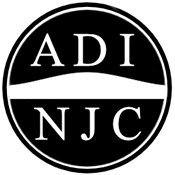Learning to Drive
The Process of Learning To Drive
The process of getting a driving licence is fairly simple but you do need to avoid some pit falls. In short the process is:
- Get your provisional driving licence
- Taking your theory test
- Learning the art of driving
- Taking the practical test
Getting a provisional driving licence
To get a provisional driving licence you need to be a British resident and meet the following requirements:
- Meet the minimum age
- Meet the minimum eyesight requirements
- Must not be prevented from driving
- Be able to pay the fee
- Provide the last 3 years’ worth of addresses
- Be able to provide ID
The minimum age to apply for a provisional driving licence is 15 and ¾ (90 days before your 16 birthday). This does not mean that you can drive from this age as you do need to be 16 to ride a motorcycle (A Category) or 17 to drive a car (B category). In fact the driving licence actually has your 16th and 17th birthday next to each category.
The rules for eyesight are –
You must be able to read (with glasses or contact lenses, if necessary) a car number plate made after 1 September 2001 from 20 metres.
You must also meet the minimum eyesight standard for driving by having a visual acuity of at least decimal 0.5 (6/12) measured on the Snellen scale (with glasses or contact lenses, if necessary) using both eyes together or, if you have sight in one eye only, in that eye.
You must also have an adequate field of vision – your optician can tell you about this and do a test.
The main reasons for being stopped from applying for a driving licence are medical or the fact that you have been banned in the past.
Your 1st driving licence costs £50.00 at the moment but the government are bringing a raft of changes and may be reducing the cost of the driving licence in 2015.
The DVLA like you to use your passport as ID but there are many forms of ID you can use. These can be found at www.gov.uk/id-for-driving-licence
You can apply in 2 ways for a driving licence, online or by post. To apply for a driving licence online you will need to use the website www.gov.uk/apply-first-provisional-driving-licence. Please be very careful when applying online as there are many fraudulent websites and companies that will process your details for you but they do charge an administration fee and the process is easy and you can do it yourself. If you would like to apply by post you can get the forms needed at your local Post Office (for free) and to make sure the process is successful I would you the Post Office identity checking service as they will check your forms and copy your ID so you do not need to send it off.
Taking your theory test
Whilst the term theory test is used the test is in fact 2 tests which are taking at the same visit. The DVSA use Pearson Professional Services to run their theory testing process for them and Pearson run a number of testing centres throughout the UK.
The 2 tests are taken on a computer and a touch screen computer will be used. Thee 1st test is a 50 question multiple choice test, with a pass mark of 43 out of the 50 potential marks. Some of the questions are multiple answers and they cover a number of subjects. Whilst some of the questions are common sense you will need to study for this and you will need a copy of the “Highway Code” and “Knowing you Traffic Signs”, which are 2 small books full of fact, figures and rules of the road. You will also need a CD Rom or app, for those of you that use iPads etc, so that you can practice the second test which is a Hazard Perception test. This is a video taken through the front windscreen of a car and you will need to click the mouse when you think you have spotted a potential hazard. There are 14 clips, with 1 clip having 2 potential hazards in it. You can see more about the theory/Hazard perception tests at www.youtube.com/watch?v=ZzgaSWWXKlk
Learning the art of driving
Learning to drive is not an exact science and how you should drive is argued in many different forums and what is needed to be a safe driver is a very controversial subject but for you as a new driver the best method of driving is the one that the DVSA advocate and is used as the medium for testing.
To start you will need to select the right driving instructor/school for you and there are many different types of instructors and schools who teach in different styles. The traditional method of learning to drive is to have an hour or 2 a week and using this style will take you roughly 4 to 6 months to learn to drive. A ever popular method is through an intensive driving course which will condense your learning down into a week or 2 and can be very effective for the right person but if you have Dyslexia, Dyspraxia or another form of learning difficulties please do not try an intensive driving course as it will not work for you.
Make sure the instructor you use knows the local test centre as this will be of benefit to yourself when preparing for the test.
Taking the practical test
The practical test is about 40 minutes long and will start with the examiner checking your documents, so remember to take the following documents with you,
- Driving Licence (both parts)
- Theory Certificate
- Appointment Letter
If you do not take both parts of your driving licence you will not be allowed to take your driving test and will lose your test fee. This does however change from January 2015 as the DVLA will only be issuing the plastic part of your driving licence from this point forward.
After checking your documents you will be asked to take an eyesight check, in which you will be asked to read a number plate from a certain point. If you fail this test 3 times you will not be allowed to take the practical test.
Leading on from this you will be asked 2 of 19 safety check questions. If you were to get these wrong you will gain 1 minor driver fault of each question wrong. Your driving instructor should supply a list of the questions and answers as well as practicing these with you.
You will now start the actual driving part of the test which is taken on a set route and will include a 10 minute independent drive. The independent drive part of the test is either a set number of junctions given to you in 1 go or you will be asked to follow the road signs/markings to a set destination e.g. “follow the signs to Heathrow Airport taking into account any road markings etc”. You will also be asked to complete a manoeuvre and possibly a parking manoeuvre at the end. 1 in 3 people are also asked to complete an Emergency Stop. You will at the end of the test be told whether you have passed or failed the driving test.
You may if you wish ask your driving instructor to sit in the back of the car and they can be there at the end to hear the result and debrief.
You can see more on the practical driving test at www.youtube.com/watch?v=hweCy5vJ1yk
The whole process of learning to drive is as easy or hard as you make it but it is my advice not scrimp on the driving lessons as the best drivers are those who are best prepared and this can only be gained by time on the road.




